The Importance of Learning To Play The Piano
For many adults, learning to play the piano is a great way to help alleviate stress, stimulate the mind, improve coordination, and promote an overall sense of well-being.
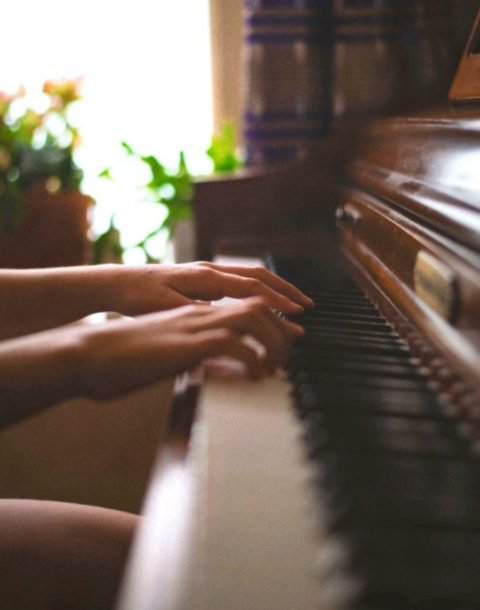 After a long hard day, it’s great to relax and express your emotions with the soothing sounds of a genuine acoustic piano.
After a long hard day, it’s great to relax and express your emotions with the soothing sounds of a genuine acoustic piano.
Playing the piano is not only fun and entertaining, it also provides great exercise for your brain. The same way your muscles can benefit from resistance or cardiovascular exercises, practicing the piano for just 20 minutes a day can help keep you mentally fit.
The importance of learning to play the piano has been documented to promote physical rehabilitation in people of all ages, but can especially help older adults stay mentally active and protect against certain illnesses, such as Alzheimer’s disease.
Studies also suggest that children as young as four years old can enjoy a lifetime of benefits from early exposure to piano, singing, guitar and other types of music lessons.
In fact, pediatric researchers have found evidence that when a child begins learning to play the piano, or takes up any type of musical instrument, this stimulates certain areas of the brain that controls their fine motor skills, memory and speech.
The self-discipline and determination needed to practice a piano regimen on a regular basis gives children a special awareness about the process of learning that carries over into their school lives.
Learning to play the piano typically requires a student to read music notation written on a staff and interpret the correct keys to play on their piano keyboard.
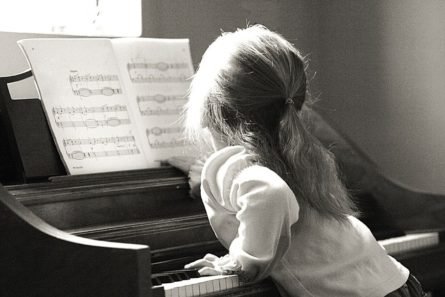 Music notation also challenges a piano student to determine how long notes must be played for, how many beats there are in a measure, and which note gets one beat during that measure.
Music notation also challenges a piano student to determine how long notes must be played for, how many beats there are in a measure, and which note gets one beat during that measure.
These types of mental exercises and hand-eye coordination tasks appear to help strengthen a child’s academic performance particularly in the areas of mathematics, science and reading.
Researchers also point out that young students who are actively involved in musical studies are more likely to experience a higher sense of self-esteem, accomplishment and were more likely to participate in physical activities.
Consequently, early participation in games and sports-related activities also helps children develop their gross motor skills as well as their fine motor skills.
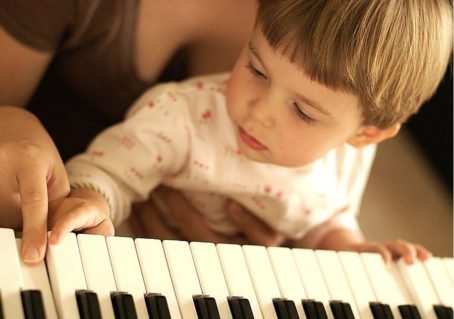 The increased physical activity lends itself to helping children maintain an average and healthy body mass index (BMI), which can also have a dramatic influence on their early social developmental skills.
The increased physical activity lends itself to helping children maintain an average and healthy body mass index (BMI), which can also have a dramatic influence on their early social developmental skills.
A music education clearly offers children, adults and people of all ages a variety of benefits regardless of nationality, language, religion or social class. The piano is the world’s best-known, widely used, and most loved musical instrument of all.
Regardless of whether a music student is learning to play the piano, guitar, violin, bass or even vocals, a piano is usually somewhere within reach during most music curriculums. Why is that? Because an acoustic 88-key piano contains the broadest range of musical tones out of any musical instrument in the world!
This allows composers to write music compositions for any other musical instrument and also tune any instrument, regardless of its’ pitch range, against the piano.
For many adults, learning to play the piano is a great way to help alleviate stress, stimulate the mind, improve coordination, and promote an overall sense of well-being.
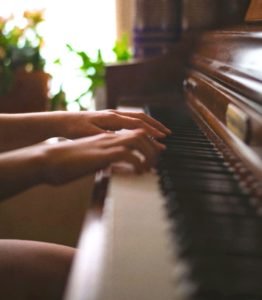 After a long hard day, it’s great to relax and express your emotions with the soothing sounds of a genuine acoustic piano.
After a long hard day, it’s great to relax and express your emotions with the soothing sounds of a genuine acoustic piano.
Playing the piano is not only fun and entertaining, it also provides great exercise for your brain.
The same way your muscles can benefit from resistance or cardiovascular exercises, practicing the piano for just 20 minutes a day can help keep you mentally fit.
The importance of learning to play the piano has been documented to promote physical rehabilitation in people of all ages, but can especially help older adults stay mentally active and protect against certain illnesses, such as Alzheimer’s disease.
Studies also suggest that children as young as four years old can enjoy a lifetime of benefits from early exposure to piano, singing, guitar and other types of music lessons.
In fact, pediatric researchers have found evidence that when a child begins learning to play the piano, or takes up any type of musical instrument, this stimulates certain areas of the brain that controls their fine motor skills, memory and speech.
The self-discipline and determination needed to practice a piano regimen on a regular basis gives children a special awareness about the process of learning that carries over into their school lives.
Learning to play the piano typically requires a student to read music notation written on a staff and interpret the correct keys to play on their piano keyboard.
 Music notation also challenges a piano student to determine how long notes must be played for, how many beats there are in a measure, and which note gets one beat during that measure.
Music notation also challenges a piano student to determine how long notes must be played for, how many beats there are in a measure, and which note gets one beat during that measure.
These types of mental exercises and hand-eye coordination tasks appear to help strengthen a child’s academic performance particularly in the areas of mathematics, science and reading.
Researchers also point out that young students who are actively involved in musical studies are more likely to experience a higher sense of self-esteem, accomplishment and were more likely to participate in physical activities.
Consequently, early participation in games and sports-related activities also helps children develop their gross motor skills as well as their fine motor skills.
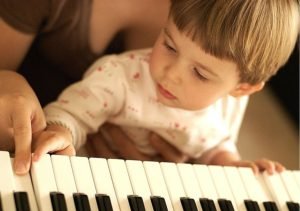 The increased physical activity lends itself to helping children maintain an average and healthy body mass index (BMI), which can also have a dramatic influence on their early social developmental skills.
The increased physical activity lends itself to helping children maintain an average and healthy body mass index (BMI), which can also have a dramatic influence on their early social developmental skills.
A music education clearly offers children, adults and people of all ages a variety of benefits regardless of nationality, language, religion or social class. The piano is the world’s best-known, widely used, and most loved musical instrument of all.
Regardless of whether a music student is learning to play the piano, guitar, violin, bass or even vocals, a piano is usually somewhere within reach during most music curriculums.
Why is that? Because an acoustic 88-key piano contains the broadest range of musical tones out of any musical instrument in the world!
This allows composers to write music compositions for any other musical instrument and also tune any instrument, regardless of its’ pitch range, against the piano.
For many adults, learning to play the piano is a great way to help alleviate stress, stimulate the mind, improve coordination, and promote an overall sense of well-being.
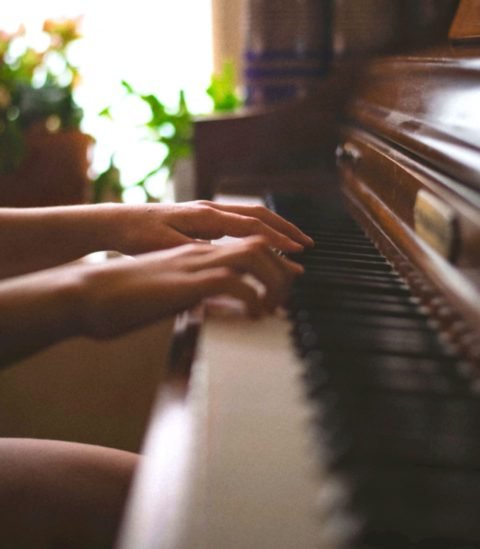
After a long hard day, it’s great to relax and express your emotions with the soothing sounds of a genuine acoustic piano.
Playing the piano is not only fun and entertaining, it also provides great exercise for your brain.
The same way your muscles can benefit from resistance or cardiovascular exercises, practicing the piano for just 20 minutes a day can help keep you mentally fit.
The importance of learning to play the piano has been documented to promote physical rehabilitation in people of all ages, but can especially help older adults stay mentally active and protect against certain illnesses, such as Alzheimer’s disease.
Studies also suggest that children as young as four years old can enjoy a lifetime of benefits from early exposure to piano, singing, guitar and other types of music lessons.
In fact, pediatric researchers have found evidence that when a child begins learning to play the piano, or takes up any type of musical instrument, this stimulates certain areas of the brain that controls their fine motor skills, memory and speech.
The self-discipline and determination needed to practice a piano regimen on a regular basis gives children a special awareness about the process of learning that carries over into their school lives.
Learning to play the piano typically requires a student to read music notation written on a staff and interpret the correct keys to play on their piano keyboard.
Music notation also challenges a piano student to determine how long notes must be played for, how many beats there are in a measure, and which note gets one beat during that measure.
These types of mental exercises and hand-eye coordination tasks appear to help strengthen a child’s academic performance particularly in the areas of mathematics, science and reading.
Researchers also point out that young students who are actively involved in musical studies are more likely to experience a higher sense of self-esteem, accomplishment and were more likely to participate in physical activities.
Consequently, early participation in games and sports-related activities also helps children develop their gross motor skills as well as their fine motor skills. The increased physical activity lends itself to helping children maintain an average and healthy body mass index (BMI), which can also have a dramatic influence on their early social developmental skills.

A music education clearly offers children, adults and people of all ages a variety of benefits regardless of nationality, language, religion or social class. The piano is the world’s best-known, widely used, and most loved musical instrument of all.
Regardless of whether a music student is learning to play the piano, guitar, violin, bass or even vocals, a piano is usually somewhere within reach during most music curriculums.
Why is that? Because an acoustic 88-key piano contains the broadest range of musical tones out of any musical instrument in the world! This allows composers to write music compositions for any other musical instrument and also tune any instrument, regardless of its’ pitch range, against the piano.

Music notation also challenges a piano student to determine how long notes must be played for, how many beats there are in a measure, and which note gets one beat during that measure.
These types of mental exercises and hand-eye coordination tasks appear to help strengthen a child’s academic performance particularly in the areas of mathematics, science and reading.
Researchers also point out that young students who are actively involved in musical studies are more likely to experience a higher sense of self-esteem, accomplishment and were more likely to participate in physical activities.
Consequently, early participation in games and sports-related activities also helps children develop their gross motor skills as well as their fine motor skills.
The increased physical activity lends itself to helping children maintain an average and healthy body mass index (BMI), which can also have a dramatic influence on their early social developmental skills.

A music education clearly offers children, adults and people of all ages a variety of benefits regardless of nationality, language, religion or social class. The piano is the world’s best-known, widely used, and most loved musical instrument of all.
Regardless of whether a music student is learning to play the piano, guitar, violin, bass or even vocals, a piano is usually somewhere within reach during most music curriculums.
Why is that? Because an acoustic 88-key piano contains the broadest range of musical tones out of any musical instrument in the world!
This allows composers to write music compositions for any other musical instrument and also tune any instrument, regardless of its’ pitch range, against the piano.
No other musical instrument holds that distinction.
So Why Do So Many Piano Students Give Up?
Good question. The answer is probably different for each person who has ever struggled with piano lessons. Likewise, I can only speak for myself regarding my own experiences with music education.
But if I had to take an educated guess, I’d say it has a lot to do with the conventional teaching methods of most piano courses. Too much… too fast!
Let’s face it, most young children, busy adults, and older seniors just don’t have the patience to sit through a log drawn out lecture about the technical study of music. This is called: Music Theory.
Is it important? … Yes, it is important. (just not all at once!)
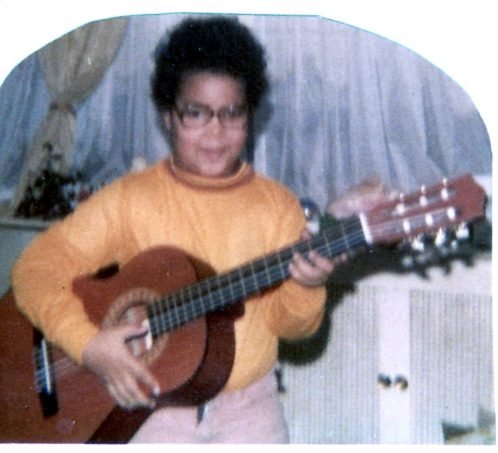 Most beginning piano students (myself included) would have much rather preferred to start playing the instrument first, then pick up the technical stuff a little bit at a time along the way.
Most beginning piano students (myself included) would have much rather preferred to start playing the instrument first, then pick up the technical stuff a little bit at a time along the way.
Too much music theory can scare any music student away. It’s pretty involved stuff. Especially when you’re trying to decipher the names of the notes on a staff, their time values, and their location on your musical instrument of choice. This is called: Sight-Reading.
Now consider this: Learning to play the piano with both hands adds an extra notch of difficulty for the sight-reading piano student. Music notation written for the left hand (bass clef) is written entirely differently for the right hand (treble clef).
This requires some additional memorization and a great deal of concentration to develop not only the proper hand-to-eye coordination from staff paper to piano keyboard, but also the physical coordination to play two differently written lines of music in either hand at the same time.
Whew!… when I was a child, this was not my favorite subject either. Can you blame me?
Like many youngsters learning to play the piano for the first time, I was a bit overwhelmed by the double-staffed notation sheets for piano music.
It took me a few years to finally warm up to these two-handed piano arrangements.
Good question. The answer is probably different for each person who has ever struggled with piano lessons. Likewise, I can only speak for myself regarding my own experiences with music education.
But if I had to take an educated guess, I’d say it has a lot to do with the conventional teaching methods of most piano courses. Too much… too fast!
Let’s face it, most young children, busy adults, and older seniors just don’t have the patience to sit through a log drawn out lecture about the technical study of music. This is called: Music Theory.
Is it important? … Yes, it is important. (just not all at once!)
 Most beginning piano students (myself included) would have much rather preferred to start playing the instrument first, then pick up the technical stuff a little bit at a time along the way.
Most beginning piano students (myself included) would have much rather preferred to start playing the instrument first, then pick up the technical stuff a little bit at a time along the way.
Too much music theory can scare any music student away. It’s pretty involved stuff. Especially when you’re trying to decipher the names of the notes on a staff, their time values, and their location on your musical instrument of choice. This is called: Sight-Reading.
Now consider this: Learning to play the piano with both hands adds an extra notch of difficulty for the sight-reading piano student. Music notation written for the left hand (bass clef) is written entirely differently for the right hand (treble clef).
This requires some additional memorization and a great deal of concentration to develop not only the proper hand-to-eye coordination from staff paper to piano keyboard, but also the physical coordination to play two differently written lines of music in either hand at the same time.
Whew!… when I was a child, this was not my favorite subject either. Can you blame me?
Like many youngsters learning to play the piano for the first time, I was a bit overwhelmed by the double-staffed notation sheets for piano music.
It took me a few years to finally warm up to these two-handed piano arrangements.
Good question. The answer is probably different for each person who has ever struggled with piano lessons. Likewise, I can only speak for myself regarding my own experiences with music education.
But if I had to take an educated guess, I’d say it has a lot to do with the conventional teaching methods of most piano courses. Too much… too fast!
Let’s face it, most young children, busy adults, and older seniors just don’t have the patience to sit through a log drawn out lecture about the technical study of music. This is called: Music Theory.
Is it important? … Yes, it is important. (just not all at once!)
 Most beginning piano students (myself included) would have much rather preferred to start playing the instrument first, then pick up the technical stuff a little bit at a time along the way.
Most beginning piano students (myself included) would have much rather preferred to start playing the instrument first, then pick up the technical stuff a little bit at a time along the way.
Too much music theory can scare any music student away. It’s pretty involved stuff. Especially when you’re trying to decipher the names of the notes on a staff, their time values, and their location on your musical instrument of choice. This is called: Sight-Reading.
Now consider this: Learning to play the piano with both hands adds an extra notch of difficulty for the sight-reading piano student. Music notation written for the left hand (bass clef) is written entirely differently for the right hand (treble clef).
This requires some additional memorization and a great deal of concentration to develop not only the proper hand-to-eye coordination from staff paper to piano keyboard, but also the physical coordination to play two differently written lines of music in either hand at the same time.
Whew!… when I was a child, this was not my favorite subject either. Can you blame me?
Like many youngsters learning to play the piano for the first time, I was a bit overwhelmed by the double-staffed notation sheets for piano music.
It took me a few years to finally warm up to these two-handed piano arrangements.
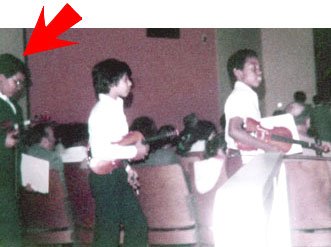
Thanks to the free music education at my local public intermediate school, I moved onto (what I considered to be) a “less-excruciating” musical instrument… the violin. *
Now, contrary to what my childhood piano teacher (my dad) had said about how difficult the violin was, I found it to be a lot easier than learning to play the piano.
I mean, all you had to do was play one single line of musical notes (the treble clef) as opposed to two lines of music for the piano (treble and bass).
And there were usually no chords to play! All the notes for the violin were generally played one note at a time. How much easier could it get?
 Thanks to the free music education at my local public intermediate school, I moved onto (what I considered to be) a “less-excruciating” musical instrument… the violin. *
Thanks to the free music education at my local public intermediate school, I moved onto (what I considered to be) a “less-excruciating” musical instrument… the violin. *
Now, contrary to what my childhood piano teacher (my dad) had said about how difficult the violin was, I found it to be a lot easier than learning to play the piano.
I mean, all you had to do was play one single line of musical notes (the treble clef) as opposed to two lines of music for the piano (treble and bass). And there were usually no chords to play! All the notes for the violin were generally played one note at a time. How much easier could it get?
 Thanks to the free music education at my local public intermediate school, I moved onto (what I considered to be) a “less-excruciating” musical instrument… the violin. *
Thanks to the free music education at my local public intermediate school, I moved onto (what I considered to be) a “less-excruciating” musical instrument… the violin. *
Now, contrary to what my childhood piano teacher (my dad) had said about how difficult the violin was, I found it to be a lot easier than learning to play the piano.
I mean, all you had to do was play one single line of musical notes (the treble clef) as opposed to two lines of music for the piano (treble and bass). And there were usually no chords to play! All the notes for the violin were generally played one note at a time. How much easier could it get?
 The following year I took up the guitar, which uses the same treble notes as the violin. So I was already prepared for the transition.
The following year I took up the guitar, which uses the same treble notes as the violin. So I was already prepared for the transition.
The only difference was that now I’d have to worry about playing on two extra strings, and occasionally we’d have to play chords. But it was all good.
The important thing was, I was finally beginning to make sense of all the black and white “blurbs” on the staff sheets. Pretty soon, reading music notation became just as easy to figure out as my math homework.
Looking back, I’m very grateful for having been exposed to a music education at an early age.
Childhood can be a very insecure time, and learning to play the piano (and other instruments) at that age helped me to develop a sense of confidence I was sorely lacking back then.
Music education helped me to concentrate and focus my abilities on learning a beautiful skill, and develop an ethic of self-discipline and hard work that would lead me onto an adulthood of even greater achievements.
